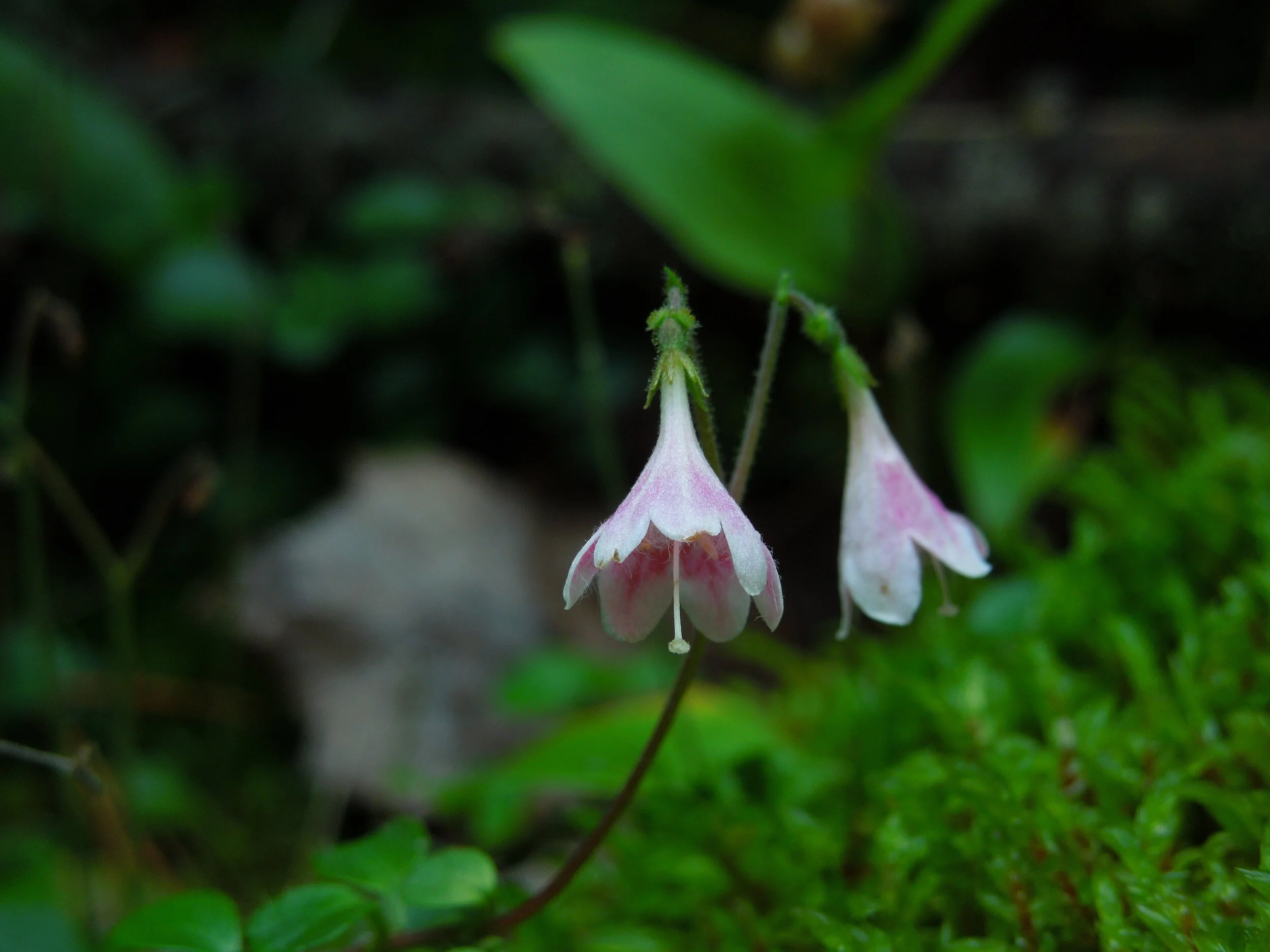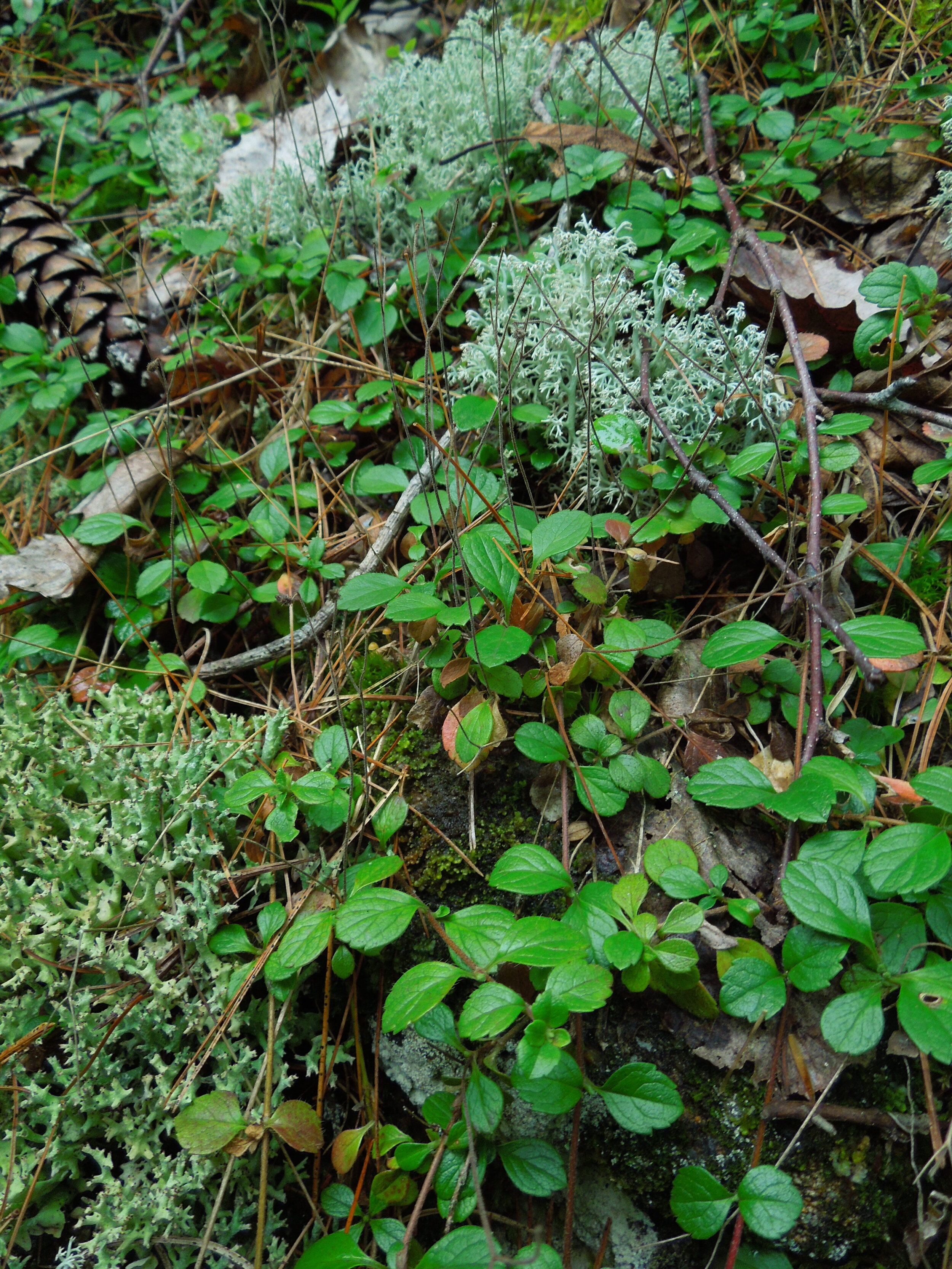Here is a short story about my first encounter with twinflower (Linnaea borealis) back in fall of 2014.
"Summer and occasionally fall" is all I needed to read. So, I had a chance after all. After a few days of sitting in a kayak, musing over various wetland plants, I was excited to get my feet back on solid ground. The Adirondack Mountains offer seemingly endless opportunities for botanizers (and all nature nuts really) to meet new and exciting species that aren't often seen. For me, Linnaea borealis is such a species.
Commonly referred to as twinflower, this small plant is technically a dwarf shrub. In fact, it is a member of the honeysuckle family, Caprifoliaceae. Unlike its larger, more aggressive cousins, twinflower would be an easy plant to miss for most. It behaves much like partridge berry as it ambles over rocks and logs, never leaving the damp forest floor. Out of those who would pay it any mind, even fewer would consider this nondescript plant much to fuss about but those people have never seen this plant in flower.
During the warmer summer months, L. borealis puts on an unbelievable display. Each sprig of stem and leaves throws up a pair of bell-like flowers that will knock your socks off. Each flower is permanently aimed at the ground like tiny lampshades. The flowers are small and dressed in a mixture of white and pink but a large population in full bloom would be impossible to miss. There is something to be said about the beauty of small plants like this. Unlike larger, gaudy flowers, L. borealis forces its admirers to get down on its level to enjoy its full beauty. I like that in a plant.
Twinflower ambling over a rock in the company of some Cladonia lichen.
The genus name "Linnaea" was given to this species in honor of the Swedish botanist, physician, and zoologist, Carl Linnaeus, who invented the binomial nomenclature naming scheme that we still use today. L. borealis has been said to be his favorite plant. As the specific epithet suggests, this species is circumboreal in its distribution. It is found in the northern forested regions of every continent in the northern hemisphere. It can also be found farther south but only at high elevation. These southern populations are disjunct relicts of the Pleistocene Epoch.
Pushed south by advancing ice sheets, boreal species like L. borealis took refuge at high elevation where climates were more similar to the far north. After the glaciers retreated, these populations were able to hang on in small pockets atop mountains. The most interesting thing about this is that L. borealis is not self compatible. It needs genetically different individuals to successfully set seed. In areas where only a small group of individuals represent an entire population, L. borealis has a hard time reproducing sexually. Such populations populations only persist via vegetative cloning. In places like Scotland, this has lead to some concern over genetic stagnation. Throughout the world, at the edges of its range, L. borealis has taken a hit from this genetic stagnation and its range is shrinking. As favorable climates continue to change, the relict populations atop mountains have nowhere to go and thus risk extirpation.
Despite all of this, L. borealis is one tough cookie. If you live where this plant is native, make sure to keep a watchful eye out for it when you are hiking. All too often it is trampled over by unwary hikers. If you are lucky enough to find a patch in bloom, get down on your hands and knees and really get to know this species. You will certainly be happy that you did.



